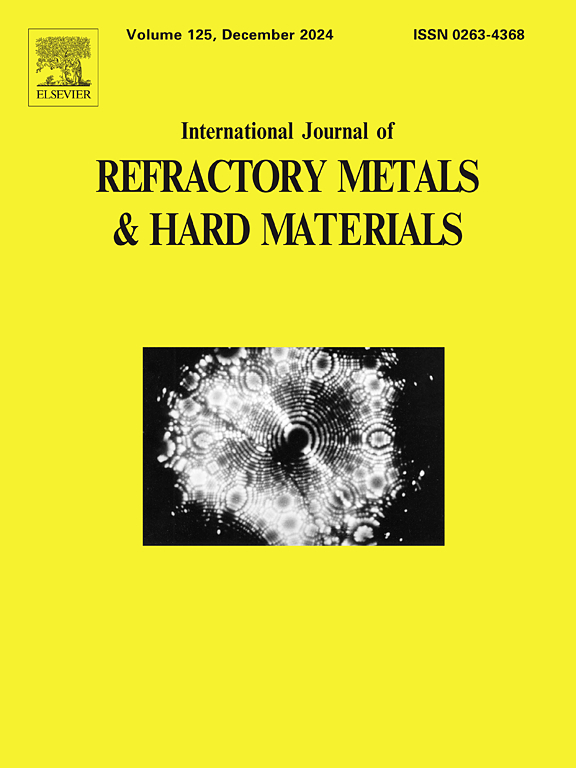Microstructure, mechanical and corrosion performance of TiC steel-bonded carbides with different heat treatments
IF 4.2
2区 材料科学
Q2 MATERIALS SCIENCE, MULTIDISCIPLINARY
International Journal of Refractory Metals & Hard Materials
Pub Date : 2025-01-20
DOI:10.1016/j.ijrmhm.2025.107061
引用次数: 0
Abstract
The alterations in microstructure, corrosion behaviour, wear resistance, and tensile characteristics of TiC steel-bonded carbide subjected to annealing (960 °C) and tempering (200 °C) processes are analysed. The transformation of the ferritic to a martensitic occurs during the annealing process, while the tempering process facilitates the formation of austenite. Results from the potentio-dynamic polarisation, potentio-static polarisation, and EIS test indicates that the martensitic phase exhibits increased passivation and enhanced corrosion resistance compared to the ferritic phase, with further improvements in corrosion resistance correlated to increased austenitic content. The SKPFM and SVET are employed to assess the change of galvanic effects between the reinforced particle and steel matrix under various post treatment conditions. The hardness of TiC steel-bonded carbide is a determinant of wear performance, while the interfacial bonding strength between TiC and the matrix significantly affects the tensile properties.
求助全文
约1分钟内获得全文
求助全文
来源期刊
CiteScore
7.00
自引率
13.90%
发文量
236
审稿时长
35 days
期刊介绍:
The International Journal of Refractory Metals and Hard Materials (IJRMHM) publishes original research articles concerned with all aspects of refractory metals and hard materials. Refractory metals are defined as metals with melting points higher than 1800 °C. These are tungsten, molybdenum, chromium, tantalum, niobium, hafnium, and rhenium, as well as many compounds and alloys based thereupon. Hard materials that are included in the scope of this journal are defined as materials with hardness values higher than 1000 kg/mm2, primarily intended for applications as manufacturing tools or wear resistant components in mechanical systems. Thus they encompass carbides, nitrides and borides of metals, and related compounds. A special focus of this journal is put on the family of hardmetals, which is also known as cemented tungsten carbide, and cermets which are based on titanium carbide and carbonitrides with or without a metal binder. Ceramics and superhard materials including diamond and cubic boron nitride may also be accepted provided the subject material is presented as hard materials as defined above.

 求助内容:
求助内容: 应助结果提醒方式:
应助结果提醒方式:


